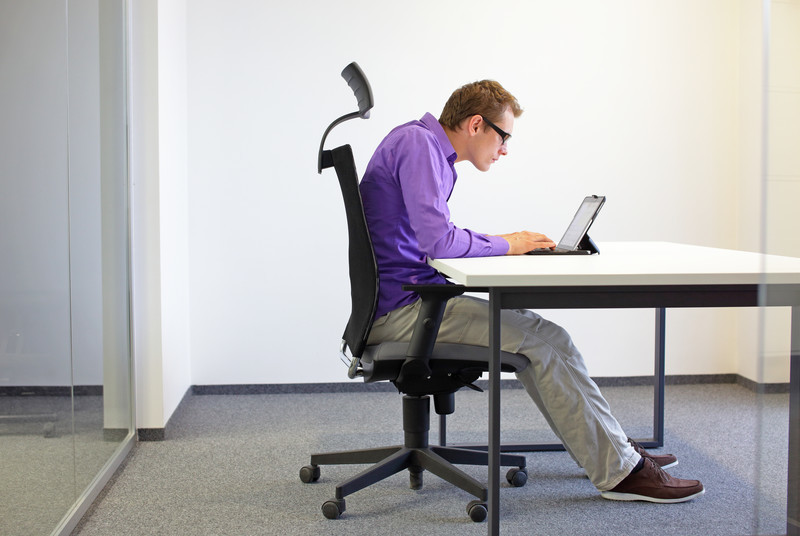
I think we can all agree that the longer we sit at work, in the classroom, or in front of a TV we tend to find ourselves slouched and slumped over, especially towards the end of the day. We all do it, if someone tells you they never have bad posture, they’re lying! Everyone knows that slouching and poor posture can lead to backaches and pains, but there are other lesser-known consequences that can develop as a result of this. Many of these can be avoided by developing good habits!
The thoracic spine, or mid-back takes the bulk of the load with habitual slouching. Because this posture puts the spine in a flexed position, the risk of a disc injury or herniation increases.
Another thing that happens when we slouch is the muscles in our mid-back tighten to pull us back into an upright posture. As we stay in the slouched position those muscles relax allowing us to slouch further. The muscles notice more slouching, tighten again, then relax the longer we hold the position. This cycle keeps repeating and the only solution the brain can come up with is to send the back muscles into a spasm.
Normal movement of the neck and shoulder are dependent on normal mobility of the thoracic spine. When we lose that needed mobility in the thoracic spine, the neck compensates by moving more than it ideally should. This can lead to neck pain and headaches.
As for the shoulder, losing thoracic mobility leads to a loss of shoulder range of motion. This puts more stress and strain on the shoulder, especially with any overhead movement and can lead to an injury over time.
This shoulder range of motion can be demonstrated with a simple exercise. While sitting, slouch down, hold your arms out in front of you and raise them up over your head. Now repeat the same thing while sitting nice and tall with good posture. You’ll notice it’s much easier to raise your arms up when sitting with good posture.
That’s the importance of thoracic mobility when it comes to the shoulder!
.jpg)
.jpg)


